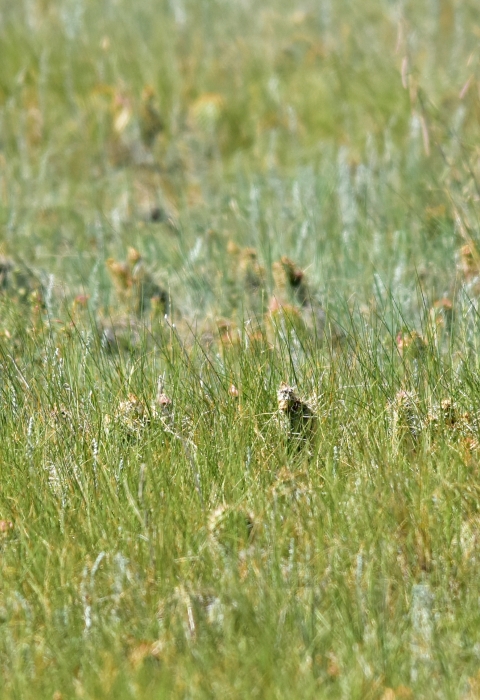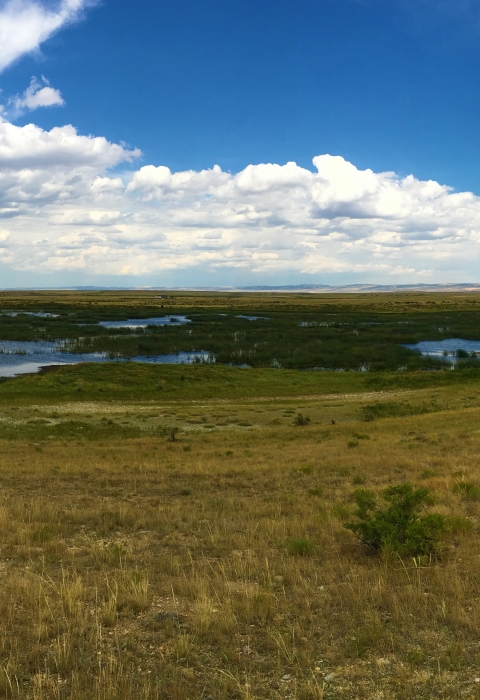What We Do
Hutton Lake National Wildlife Refuge, located within a high plains basin ecosystem known as the Laramie Basin, is one of over 560 refuges in the National Wildlife Refuge System - a network of lands set aside and managed by the U.S. Fish and Wildlife Service specifically for wildlife. The Refuge is managed as part of the Arapaho National Wildlife Refuge Complex. It is situated in the southern part of the Laramie plain; a high elevation, dry grassland surrounded by mountains. The shallow depressions of the basin, within the relatively flat topography of the region, support wetland complexes, including marsh and lakes, that are unique to the semiarid area. The Refuge sits at an elevation of 7,150 feet and hosts five small lakes - Hutton, Creighton, George, Rush and Hoge. The upland vegetation consists of short grass prairie species and sagebrush sagebrush
The western United States’ sagebrush country encompasses over 175 million acres of public and private lands. The sagebrush landscape provides many benefits to our rural economies and communities, and it serves as crucial habitat for a diversity of wildlife, including the iconic greater sage-grouse and over 350 other species.
Learn more about sagebrush steppe.
Management and Conservation
Habitat and visitor service goals for Hutton Lake, which were developed during the Comprehensive Conservation Plan process for the Laramie Plains Refuges in 2007 are as follows.
Wetlands Goal: Manage refuge impoundments and other wetlands to create a diverse habitat for wetland-dependent wildlife.
Uplands Goal: Gather baseline biological information to guide evaluation and management of shrub- and grass-dominated uplands for benefit to migratory birds (willet, horned lark), white-tailed prairie dogs, pronghorn, and other wildlife.
Visitor Services Goal: Provide wildlife-dependent recreational opportunities to a diverse audience when the administration of these programs does not adversely affect habitat management objectives.
Law Enforcement
U.S. Fish and Wildlife Service law enforcement officers have a wide variety of duties and responsibilities. Officers help visitors understand and obey wildlife protection laws. They work closely with state and local government offices to enforce federal, state and refuge hunting regulations that protect migratory birds and other game species from illegal take and preserve legitimate hunting opportunities.
Laws and Regulations
Visitors are encouraged to enjoy the activities offered on the Refuge while observing the following rules to protect wildlife and their habitats. These extra rules and regulations are intended to protect wildlife, wildlife habitat and the safety of our visitors and staff. The Refuge is also subject to all Federal, State, and local laws and regulations. Be safe and enjoy your national wildlife refuge national wildlife refuge
A national wildlife refuge is typically a contiguous area of land and water managed by the U.S. Fish and Wildlife Service for the conservation and, where appropriate, restoration of fish, wildlife and plant resources and their habitats for the benefit of present and future generations of Americans.
Learn more about national wildlife refuge !

